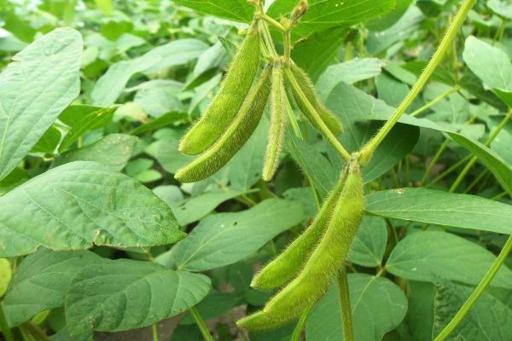Soybean
Glycine max
Also known as: Glycine soja

Growing Information
Growth Habit: Annual
Climate Requirements: Thrives in warm temperate to tropical climates with moderate rainfall (500–1000 mm).
Soil Requirements: Prefers well-drained loamy or sandy soil with pH 6.0–7.5.
Water Requirements: Moderate water needs; requires irrigation during dry spells.
Planting Instructions: Directly sown at a depth of 2–4 cm with row spacing of 45–75 cm.
Harvesting Information: Harvested 90–120 days after planting when pods turn yellow and dry.
Characteristics & Benefits
Plant Characteristics: Soybean is an annual leguminous plant with trifoliate leaves and small pods containing edible seeds.
Nutrient Content: High in protein, fiber, and essential amino acids; rich in iron and calcium.
Health Benefits: Supports heart health, promotes muscle growth, and may reduce cholesterol levels.
Yield Information: Average yield is around 2.5–4.0 tons per hectare.
Uses & Distribution
Culinary Uses: Used in tofu, soy milk, soy sauce, and animal feed.
Industrial Uses: Used in biodiesel production, plastics, and adhesives.
Native Range: East Asia, particularly China.
Current Distribution: Grown in the United States, Brazil, Argentina, China, and India.
Pest & Disease Management
Common Pests: Soybean aphid, cutworms, and root-knot nematodes.
Diseases: Soybean rust, bacterial blight, and Fusarium wilt.
IPM Practices: Crop rotation, use of resistant varieties, and biological pest control.
Market Value: $450.50
Research & References
Studies and Articles: Research on drought-resistant soybean varieties and sustainable farming.
Bibliography: Soybean Research Journal, 2023.
Comments
Add CommentNo comments yet. Be the first to comment!